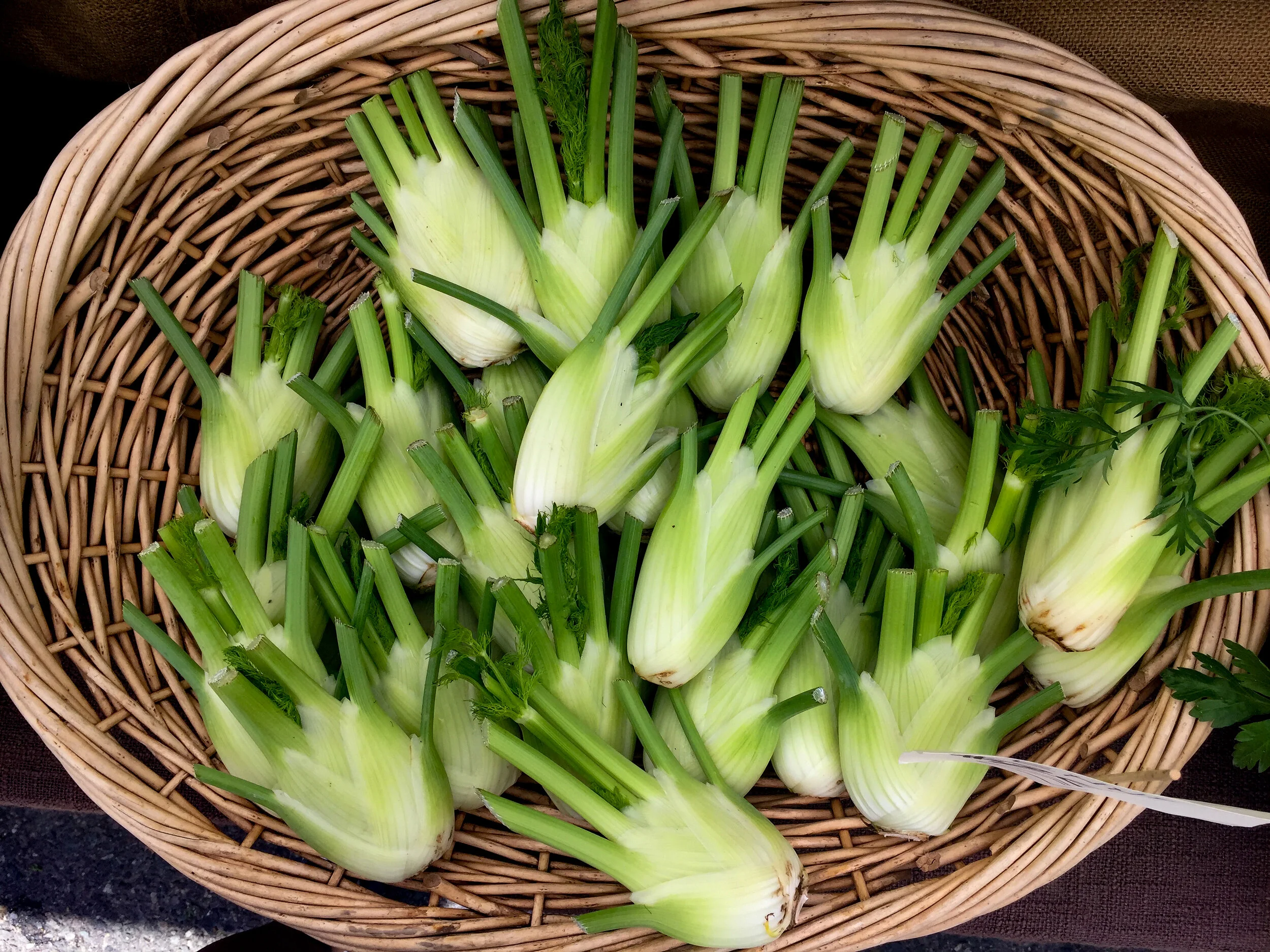Featured Ingredient: Fennel
Fennel grown by Present Tense Farm, whose logo is also fennel.
The history of fennel is as varied as it is ancient, and its uses are as diverse as they are global. This very well documented herb has been studied by scientists, shaman, and chefs alike for its medicinal, spiritual, and culinary uses around the world. For our purposes, we’ll start with the basics, at the beginning.
Fennel is part of the carrot family, (Apiaceae), an herb cultivated for all of its parts, from bulb to leaves. Because of its Mediterranean origins, fennel thrives in warm weather and lots of sun, growing almost as tall as a person and living for two years or more in the right conditions. Fennel can be a nuisance in its favorite climates. In Australia and parts of the U.S., wild fennel is invasive and considered a weed. In temperate zones, like here in Washington, fennel is cultivated as an annual crop. Its aromatic flavor comes from the compound anethole, which is also found in anis and star-anis.
Fennel is native to Southern European countries on the Medetaranian and southwestern Asia. In Ancient Greece, the plant was known as ‘marathon,’ as it grew on the site of the Battle Of Marathon in 490BC. The Greek placename Marathon, literally translated, means “place of fennel.” In Greek mythology, Prometheus used a stalk of fennel to steal fire from the gods for the humans. (We all know how that turned out). In medieval times fennel was believed to possess magic powers, and on Saint Johns Eve superstitious Roman Catholics would plug the keyholes of their front doors with fennel to ward off evil spirits.
Fennel is one of the oldest medicinal herbs in the world. As early as 3000 BC, the Mesopotamians used fennel as medicine. Globally, fennel is known by over 100 names, and it is used to treat everything from insomnia to cancer, and even depression. Every single part of the plant has a job; fennel seeds are used for liver pain in Northeast Brazil, and in South Africa, it’s leaves are infused in a tea to treat fevers and arthritis. Across Europe, the entire fennel plant is used to aid a range of digestive issues, and in Bolivia, (and many other countries), the leaves and fruits are used as a milk stimulant for pregnancy. If there is any plant deserving of the title “super-food,” it’s fennel, which according to a study by the USDA, is the richest source of dietary fiber and vitamins.
If you’re ever unsure how to cook with fennel, you can find inspiration globally. In European dishes, it is commonly used in desserts, salads, and breads. In many cuisines in the Indian subcontinent and parts of the Middle East, fennel seed is considered an essential ingredient. In China it is included in five-spice powders. Raw or roasted fennel pairs beautifully with seafood and is often used in pickling. Fennel is also an ingredient in liquors and aperitifs, including absinthe.
While fennel can be found well into the winter in the Pacific North West, it is not a year-round crop! Be sure to pick some up at your local farmers market while it’s still available.

